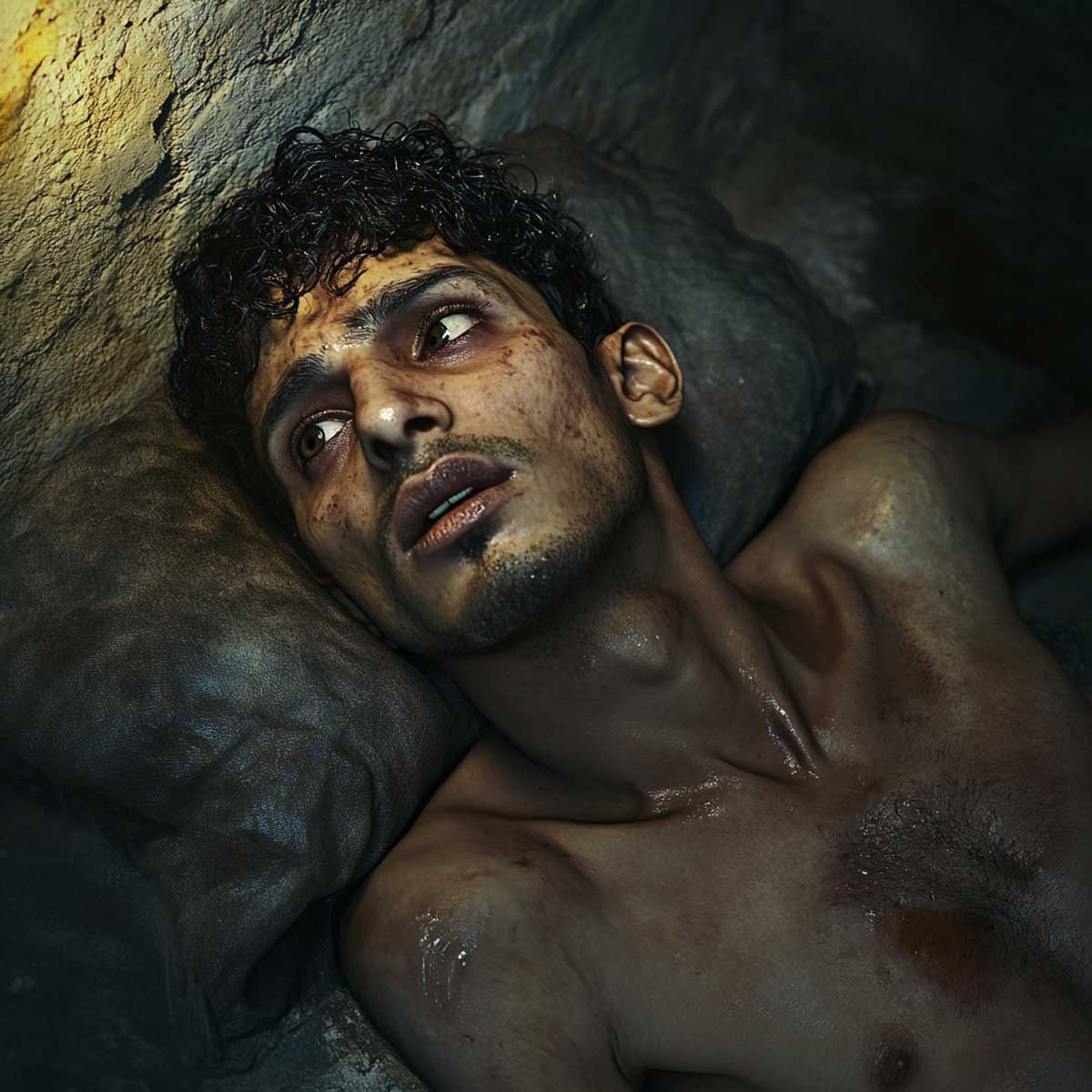More Coverage
Twitter Coverage
Satyaagrah
Written on
Satyaagrah
Written on
Satyaagrah
Written on
Satyaagrah
Written on
Satyaagrah
Written on
Join Satyaagrah Social Media
“The world, even the smallest parts of it, is filled with things you don’t know”: Vaishnava philosopher Guru Ramanujacharya's original body preserved in Sri Ranganathaswamy temple with sandalwood paste-saffron for 900 years, no other chemicals added

“The world, even the smallest parts of it, is filled with things you don’t know”: Vaishnava philosopher Guru Ramanujacharya's original body preserved in Sri Ranganathaswamy temple with sandalwood paste-saffron for 900 years, no other chemicals added
Hindu religion is one of the world’s oldest religions, which beliefs in the circle of birth and death which happens again and again until one attains Mukti. Where the body is a gift from nature that is made up of five principles ‘bhutas’; fire, water, earth, ether, and air. It is hence believed that all the five principle elements acquired by the body should be given back to nature after death. Thus, Hindus cremate the body of the dead unlike Christians and Muslims, who bury them.
|
Nevertheless, there are many practices in many cultures around the world for the funeral of the dead. Apart from burring and cremating the dead, there is also a culture of preserving a dead body by various means, the mummies of Egypt is a prominent example of it. This is not a practice that is followed by many. However, it is astonishing to know that this practice has also happened in the history of Hindus.
Vaishnava philosopher and guru Ramanujacharya's original body preserved inside Sri Ranganathaswamy Temple, Srirangam, Tiruchinarpalli since 1137 CE.
Sri Ramajunacharya was an exponent of the Sri Vaishnavism tradition within Hinduism.
Ramanuja’s thiruvarasu (sacred burial shrine) is the Ramanuja shrine (sannidhi) located inside the Sri Ranganathaswamy temple.
Sandalwood paste and saffron are used to maintain the body and no other chemicals are added.
Twice a year, a coat of camphor is mixed with saffron, which produces an ochre/orange tint on the preserved body and this tradition has been practiced for more than 878 years.
His body is placed behind his idol and is open for darshan to all devotees.
One can notice nails on the fingers, which indicate that it is actually a human body.
His physical body is placed in the southwest corner on the fifth round within the Srirangam temple as ordered by Lord Ranganatha himself.
|
Even many Srivaishnavas are not aware that in Srirangam, their holiest place hailed as ‘Bhuloka Vaikuntam‘ ( Heaven on Earth) lies preserved the body of Sri Ramanuja in all its pristine state unostentatiously, without any fanfare or publicity, and without using any of the chemical preservatives used for the Egyptian and Goan mummies.
When it was time for Sri Ramanuja to leave this World, he informed his disciples about it. The disciples requested Acharya to live with them for some more days. Ramanuja told them that he will live with them for three more days but the disciples were not satisfied, so Yathiraj told them to get a deity made. Then after duly sanctifying the statue, he transferred all his power to it. Then with his head on the lap of Embar and his feet on the lap of Vaduga Nambi, Ramanuja breathed his last in 1137 AD listening to the recitation of the Divya Prabhandam and looking at the Sri Padukas of Yamunacharya.
It is amazing that the body of Sri Ramanuja is mummified in all its pristine state unostentatiously, without any fanfare or publicity, and without even using any of the chemical preservatives used for the Egyptian mummies. The Egyptian mummies are kept in a sleeping position and wrapped in cloth after applying several layers of chemicals but Ramanujacharya's original body is kept in a normal sitting position and open to all for viewing. Twice a year, a coat of Pachai Karpuram (Camphor) mixed with Kumkum (Vermillion), produces an ochre/orange tint on the preserved body and this tradition has been practiced for almost 900 years.
The biggest miracle is that it is said that the actual physical body of Sri Ramanuja has solidified just as it is. The eyes are clearly visible and on a closer look nails also can be noted. There is no Abhishek performed and twice annually the deity is cleaned with certain herbs mentioned above. There is numerous evidence to indicate that it is the actual body – the paintings around the shrine, the temple history, and the look itself.
This is the only instance where an actual human body is kept inside a Hindu temple for so many years.
|
Ramanujacharya's original body is preserved in Srirangam Temple
In the year 1017 A.D., Ramanuja was born in the village of Perumbudur, about twenty-five miles west of Madras. His father was Kesava Somayaji and his mother was Kantimathi, a very pious and virtuous lady. Ramanuja’s Tamil name was Ilaya Perumal. Quite early in life, Ramanuja lost his father.
Then he came to Kancheepuram to prosecute his study of the Vedas under one Yadavaprakasha, a teacher of Advaita philosophy.
Ramanuja had re-installed the Govindaraja idol in Tirupati, which was initially thrown into the sea by Kulotthunga Chola, a Saivaite.
He attained his Acharyan Thiruvadi (the lotus foot of his Acharya) in Lord Ranganatha temple at Srirangam and ever since, Ramanujacharya's original body was mummified and preserved there.
References:
 Support Us
Support Us
Satyagraha was born from the heart of our land, with an undying aim to unveil the true essence of Bharat. It seeks to illuminate the hidden tales of our valiant freedom fighters and the rich chronicles that haven't yet sung their complete melody in the mainstream.
While platforms like NDTV and 'The Wire' effortlessly garner funds under the banner of safeguarding democracy, we at Satyagraha walk a different path. Our strength and resonance come from you. In this journey to weave a stronger Bharat, every little contribution amplifies our voice. Let's come together, contribute as you can, and champion the true spirit of our nation.
 |  |  |
| ICICI Bank of Satyaagrah | Razorpay Bank of Satyaagrah | PayPal Bank of Satyaagrah - For International Payments |
If all above doesn't work, then try the LINK below:
Please share the article on other platforms
DISCLAIMER: The author is solely responsible for the views expressed in this article. The author carries the responsibility for citing and/or licensing of images utilized within the text. The website also frequently uses non-commercial images for representational purposes only in line with the article. We are not responsible for the authenticity of such images. If some images have a copyright issue, we request the person/entity to contact us at This email address is being protected from spambots. You need JavaScript enabled to view it. and we will take the necessary actions to resolve the issue.
Related Articles
- Srikalahasti Temple, Dakshina Kailash
- Bhagwan Parashurama – Chiranjeevi Avesha avatar of Bhagwan Vishnu
- "Embrace the light within and discover the boundless expanse of enlightenment": IIT Kanpur, renowned for its remarkable advancements in science and technology embarks on a sacred endeavor to digitize and disseminate Indian philosophical texts, and Vedas
- Biggest Wonder of the World : Kitchen of Lord Shri Jagannath
- "People without knowledge of their past history, origin & culture is like a tree without roots": Assamese Bhaona - traditional art with religious messages of truthfullness & dharma, created by 6th century saint-reformer Mahapurush Srimanta Sankardeva
- A new symbol of Hindutva pride, Shri Kashi Vishwanath Temple Corridor
- Tirot Singh: An Unsung Hero of the Khasi Tribe who destroyed British with his skill at Guerrilla Warfare
- "Look deep into nature, and then you will understand everything better": Himachal - International Kullu Dussehra Festival, starts with a procession of Lord Raghunath, carried on a Ratha across town, 8000 women perform folk dance wearing traditional outfit
- The forgotten temple village of Bharat: Maluti
- Yes, Secular India’s shift towards ‘Majoritarianism’ is very much real: So, just deal with it
- "With every breath, I plant the seeds of devotion, I am a farmer of the heart": Perhaps, Manipuri Raas Leela is the best form of Leela prevailed in India of spiritualism in Vaishnavishm & classical dances based on devotion of Meera of Rajasthan for Krishn
- “In the struggle between stone & water, in time, the water wins”: Bharatiya Martial Art | Kalaripayattu is the father of all martial arts in the world, the existence of Martial arts in India for over 3000 years can be proved by its mention in the Vedas
- The Residue of Christianism - Hindu Society Under Siege
- "पितृ पक्ष": Amidst the chaos of modernity, the timeless ritual of ancestor worship stands firm, bridging the past & present, not mere tradition; its the soul's whisper, echoing gratitude & seeking blessings from those who once tread the paths we now walk
- "Aum Mahadevaya Namaha - The Great Universal God": Sanatana Dharma forces human mind, time and time again, to accept the fact that Divine is all that exists, both clean and unclean, pure and impure, auspicious and inauspicious
























